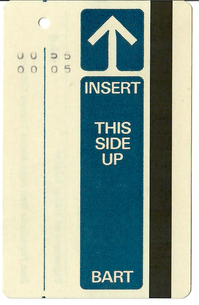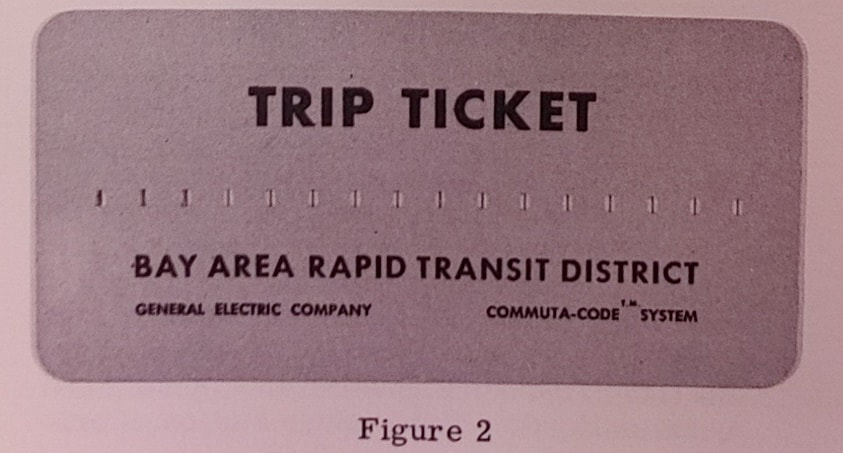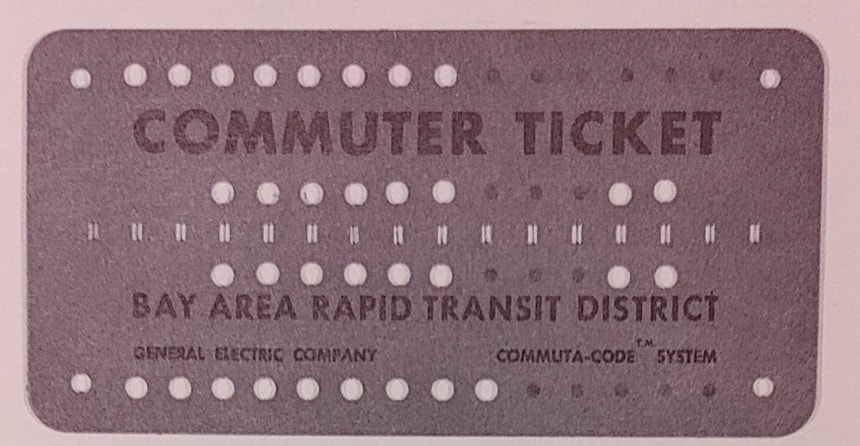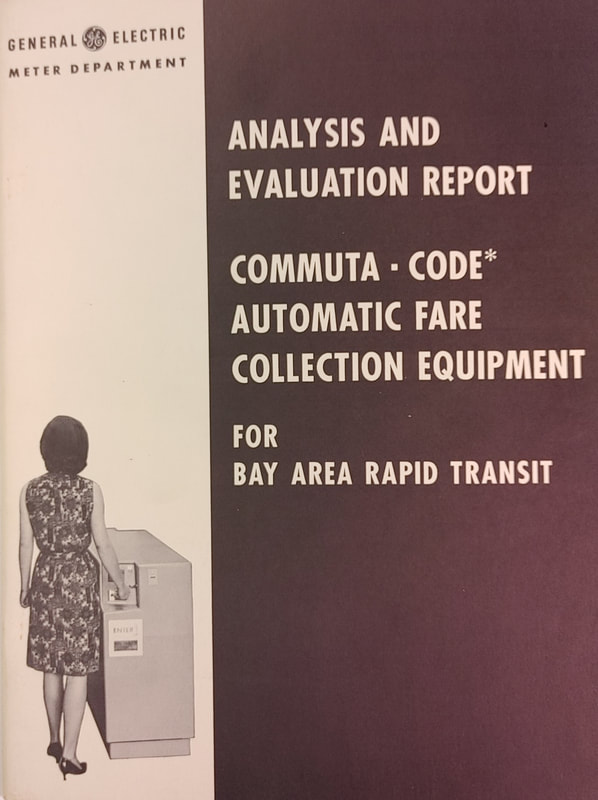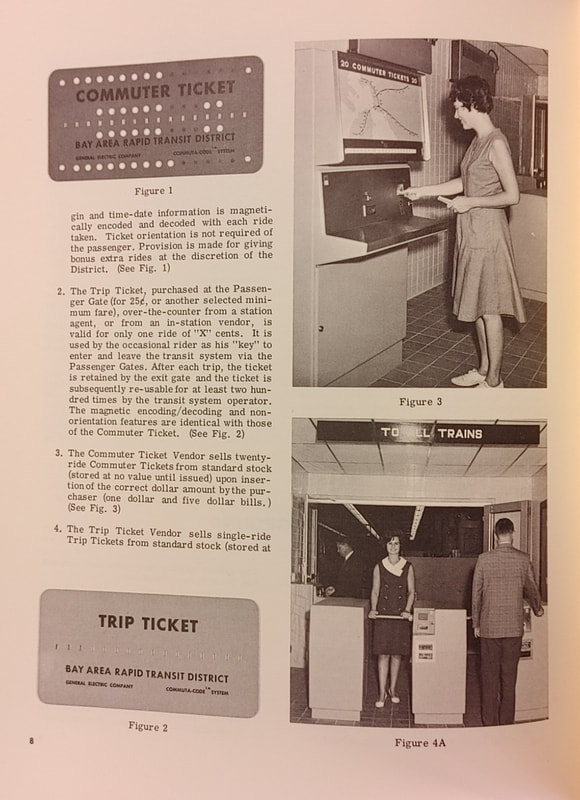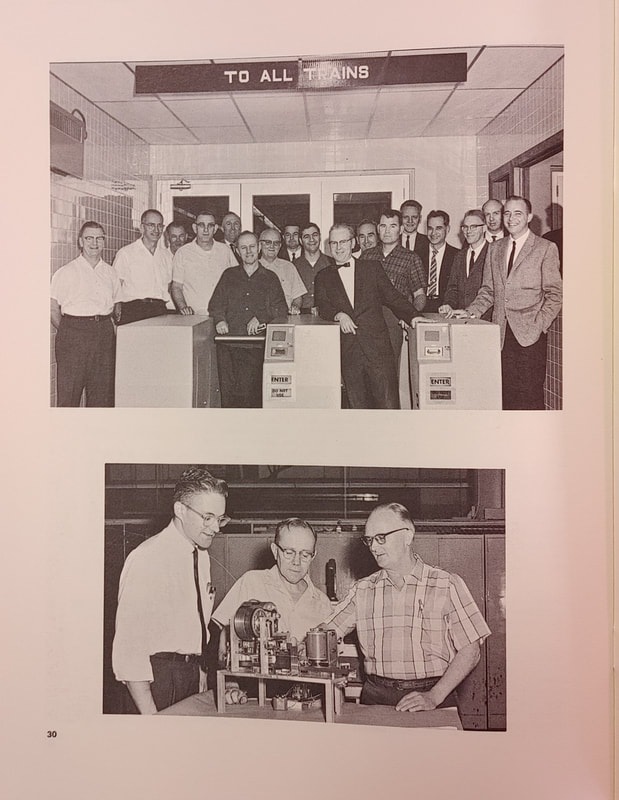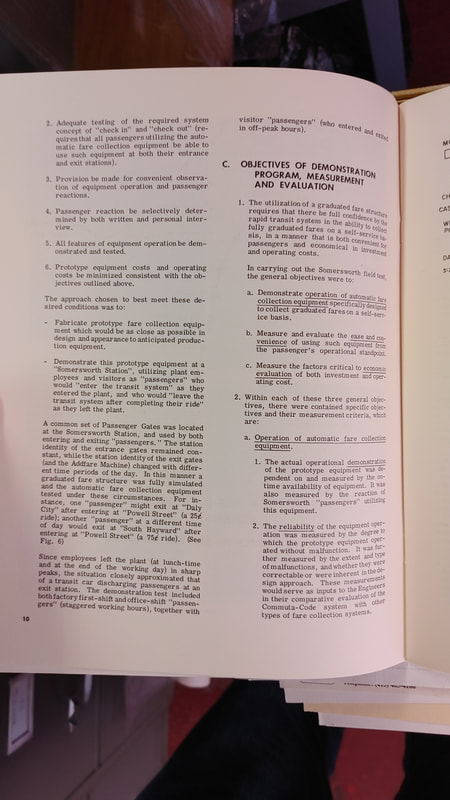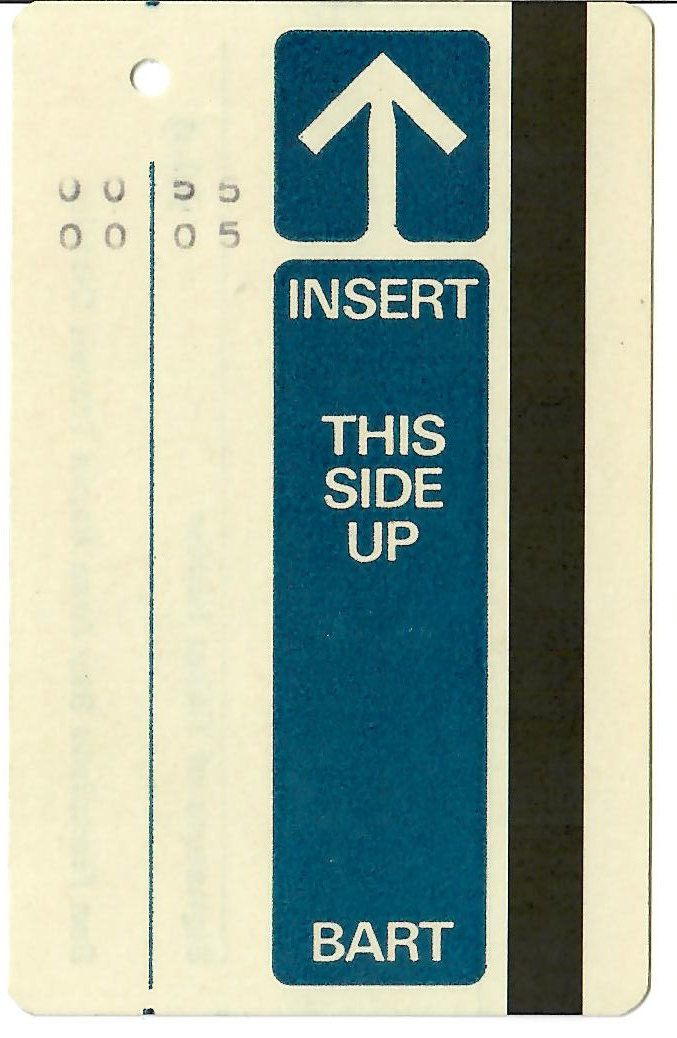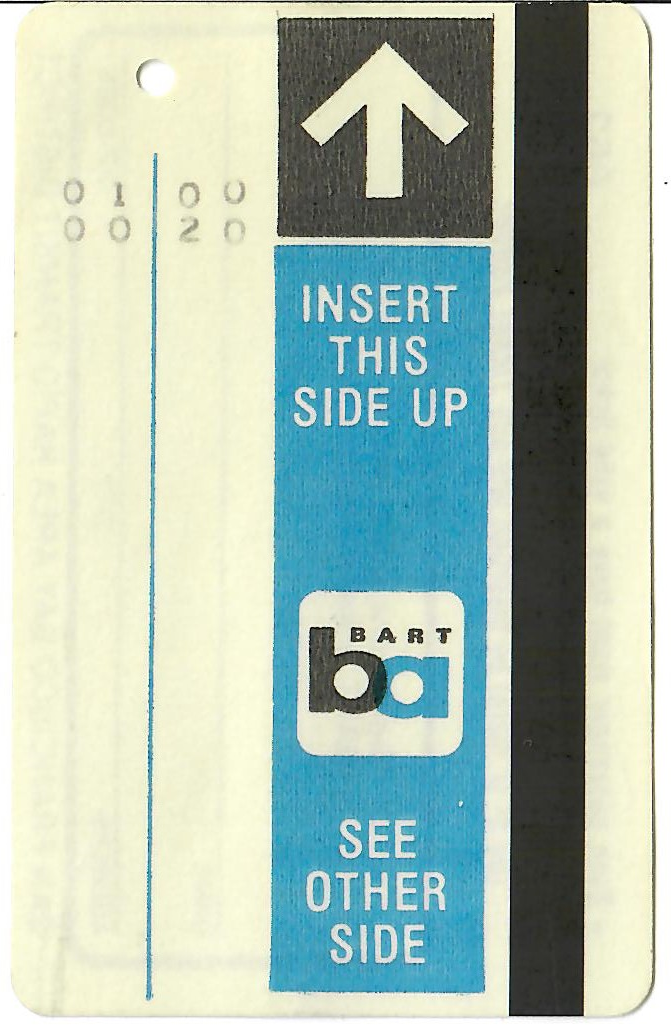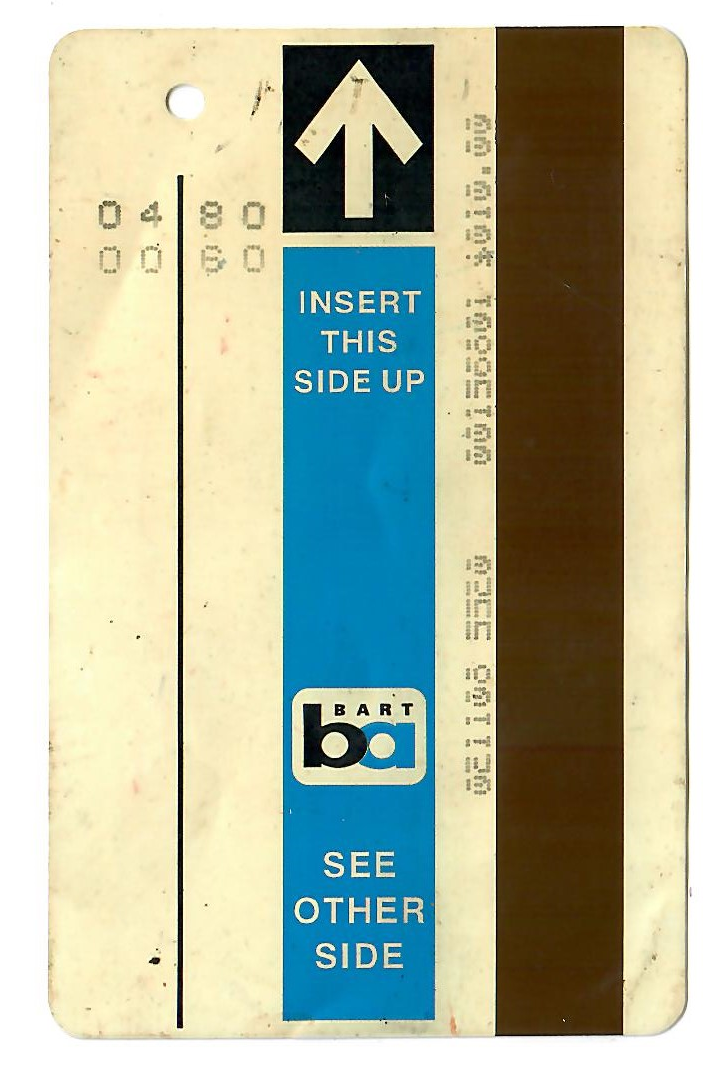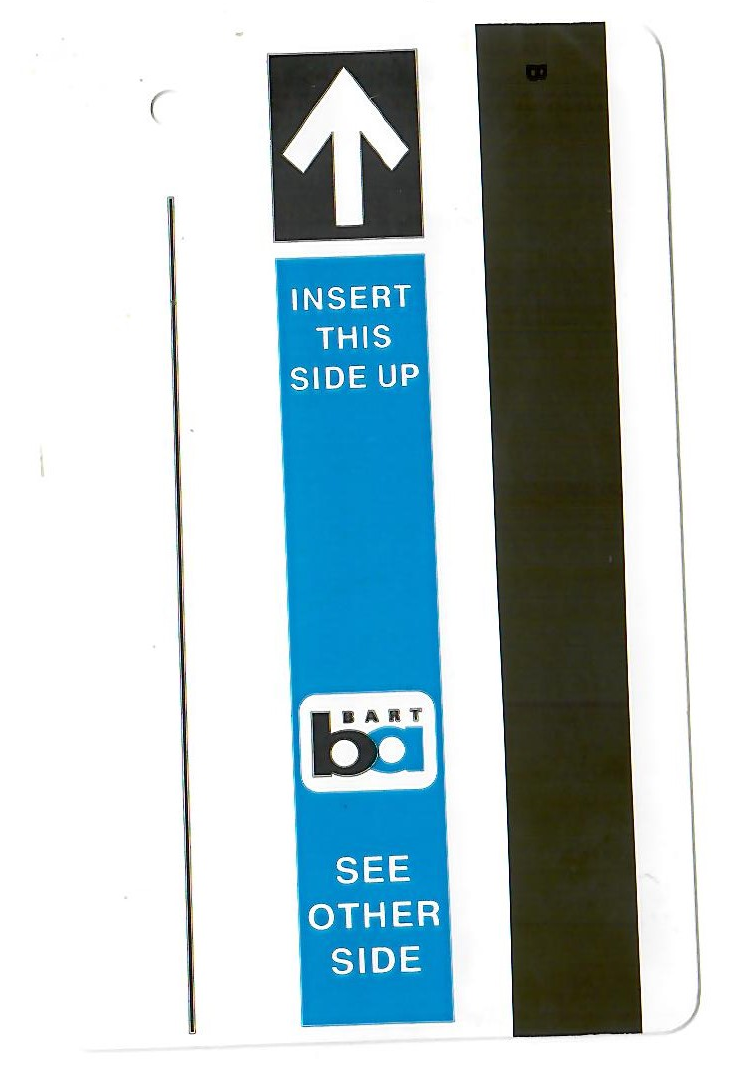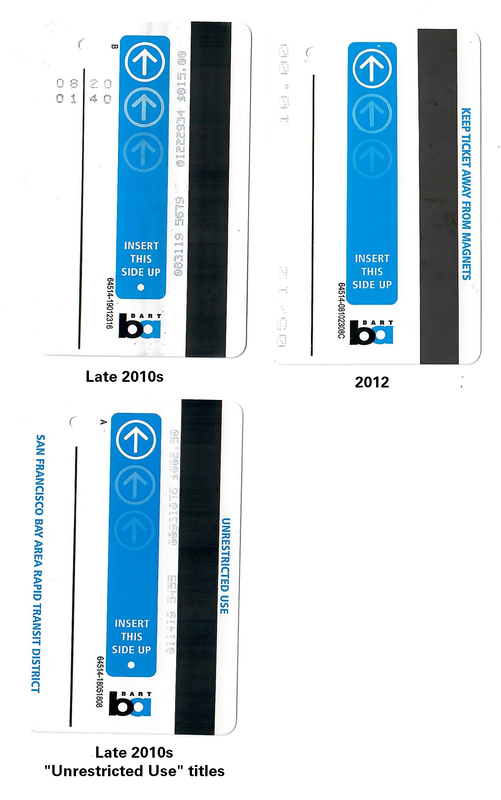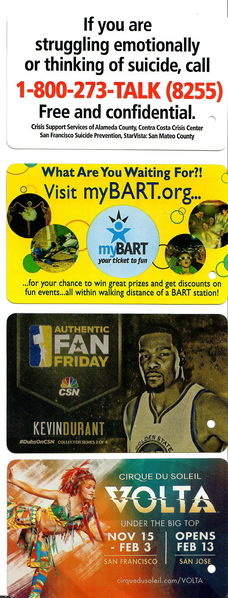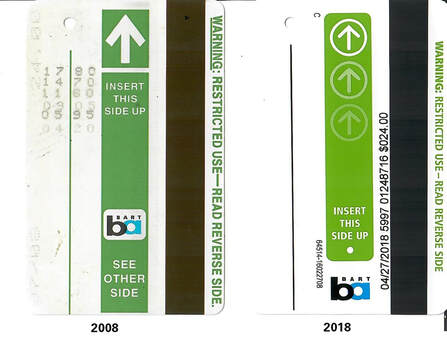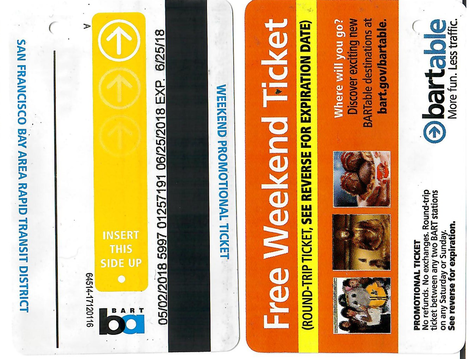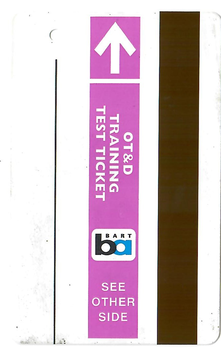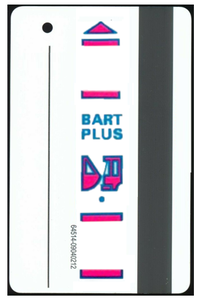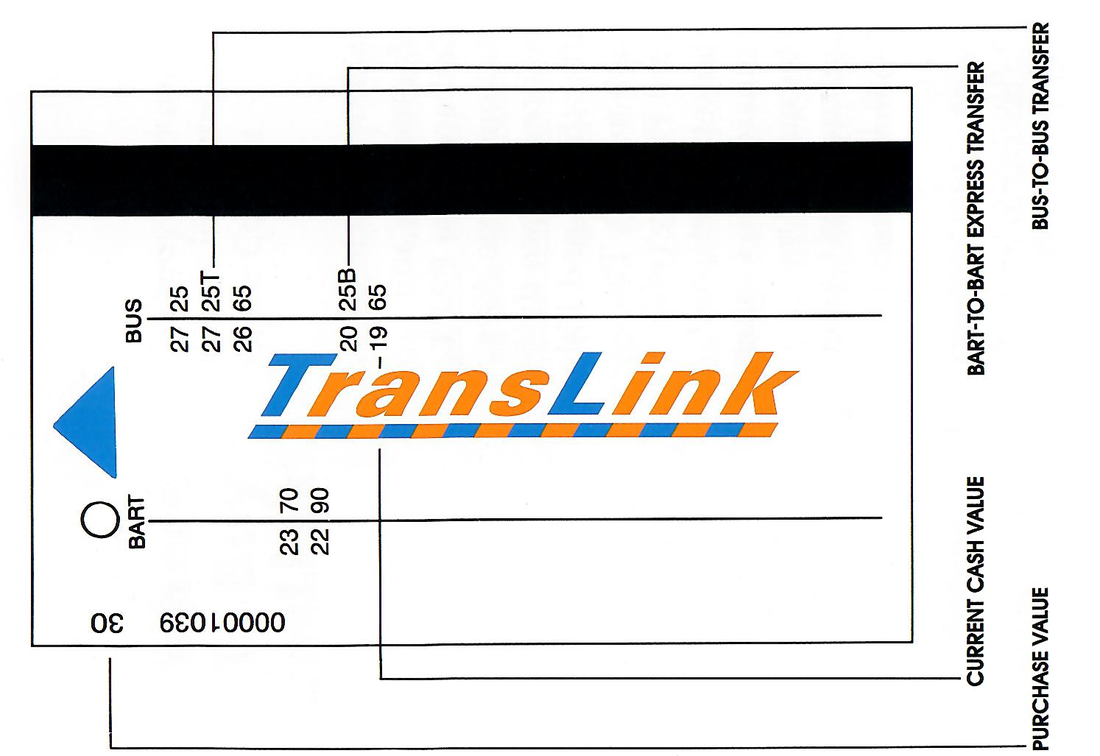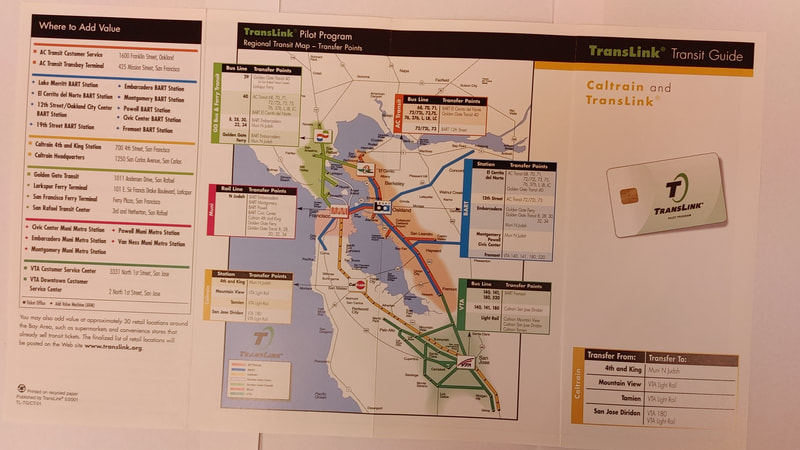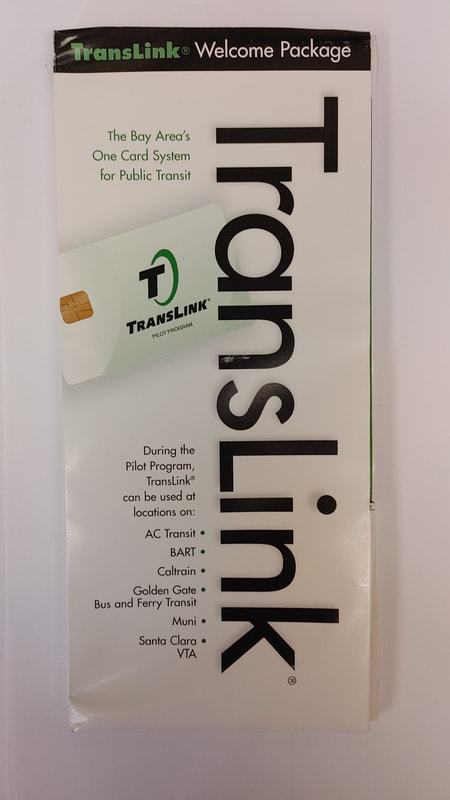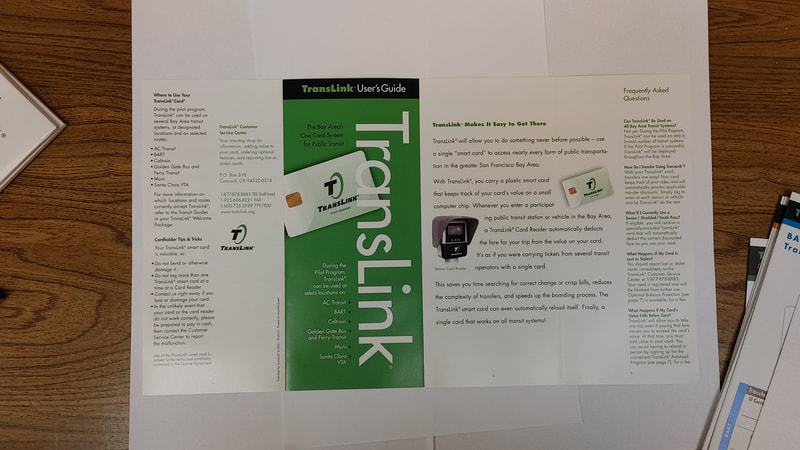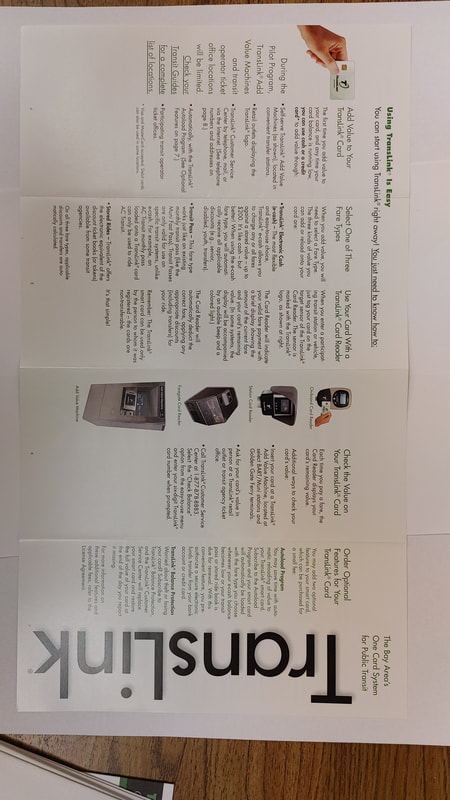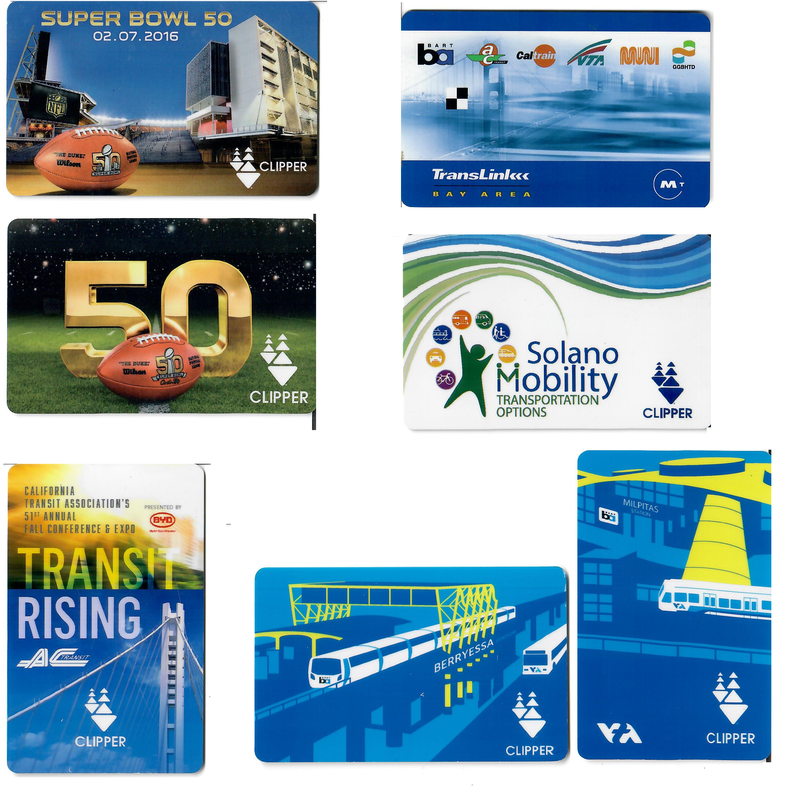Fare Media (Tickets, Clipper)
Sections:
Tickets and AFC Development
Ticket Types
Blue Ticket (Normal Fare)
Red Ticket (Youth/Disability)
Green (Senior)
Yellow (Promotional)
Purple (Test)
Translink I
Translink II
Clipper
Tickets and AFC Development
Ticket Types
Blue Ticket (Normal Fare)
Red Ticket (Youth/Disability)
Green (Senior)
Yellow (Promotional)
Purple (Test)
Translink I
Translink II
Clipper
Tickets and AFC Development
"Magstripe" (magnetic stripe) tickets were wallet-sized stored value cards used to enter and exit the paid areas of the system via fare gates, alongside the use of associated ticket vending machines and addfare machines. The original Automatic Fare Collection (AFC) system was developed by IBM.
In typical BART fashion, the tickets were the most advanced fare media in widespread use in the early 1970s. Comparable Automatic Fare Collection (AFC) systems, such as the Illionis Central (1968) and PATCO (1969) used a similarly sized card, but the entire obverse side was dedicated to an iron-oxide layer for the encoding of information via a binary scheme. This system for the eastern systems was developed by Advanced Data Systems.
BART was likely the first transit application of the narrow magstripe card in the world.
In typical BART fashion, the tickets were the most advanced fare media in widespread use in the early 1970s. Comparable Automatic Fare Collection (AFC) systems, such as the Illionis Central (1968) and PATCO (1969) used a similarly sized card, but the entire obverse side was dedicated to an iron-oxide layer for the encoding of information via a binary scheme. This system for the eastern systems was developed by Advanced Data Systems.
BART was likely the first transit application of the narrow magstripe card in the world.
Ticket Types
Tickets sold: 1972 - 2020
Blue: Normal Fare
Red: Youth/Disabled (two different discount levels)
Green: Senior
Orange: School (None in collection)
Yellow: Promotional
Purple: Promotional
Purple: Test Ticket
Blue: Normal Fare
Red: Youth/Disabled (two different discount levels)
Green: Senior
Orange: School (None in collection)
Yellow: Promotional
Purple: Promotional
Purple: Test Ticket
Blue Ticket (Normal Fare)
The standard Blue ticket was for normal fare riders.
The design of the ticket changed moderately through the decades. In the final approximately 15 years, some tickets sported different messages/advertisements on the rear.
The design of the ticket changed moderately through the decades. In the final approximately 15 years, some tickets sported different messages/advertisements on the rear.
Red Ticket (Youth/Disability)
Youth: 50% discount for persons aged 5 to 18 years of age.
Disability: 62.5% discount for persons with a qualifying disability.
Disability: 62.5% discount for persons with a qualifying disability.
Green (Senior)
For persons aged 65 and over.
Senior: 62.5% discount
Senior: 62.5% discount
BART Plus
TransLink I
|
The first TransLink was a demonstration project for a common ticket for use on BART, County Connection, and BART Express busses. It lasted from 1993 to about December 1995, and was financed through a $4 million FTA grant via the MTC.
Translink was touted as the first joint bus and rail stored value ticket system in the United States. The fare equipment for the busses were named "Bus Ticket Validators (BTVs)" and were produced the French company CGA. They required the insertion of the ticket into the BTV, and carried a moderately attractive transfer discount. TransLink was abandoned due to issues with BTV performance ("rough roads") and administration expenses. Data from the TransLink project was used to influence the second TransLink project based around a contactless smart card. |
Translink II
Clipper
Sources
Warner, David. "Implementing a 21st Century Fare Collection System on a 20th Century Zone System." 2009. Port Authority Transit Corporation/AREMA
Warner, David. "Implementing a 21st Century Fare Collection System on a 20th Century Zone System." 2009. Port Authority Transit Corporation/AREMA

